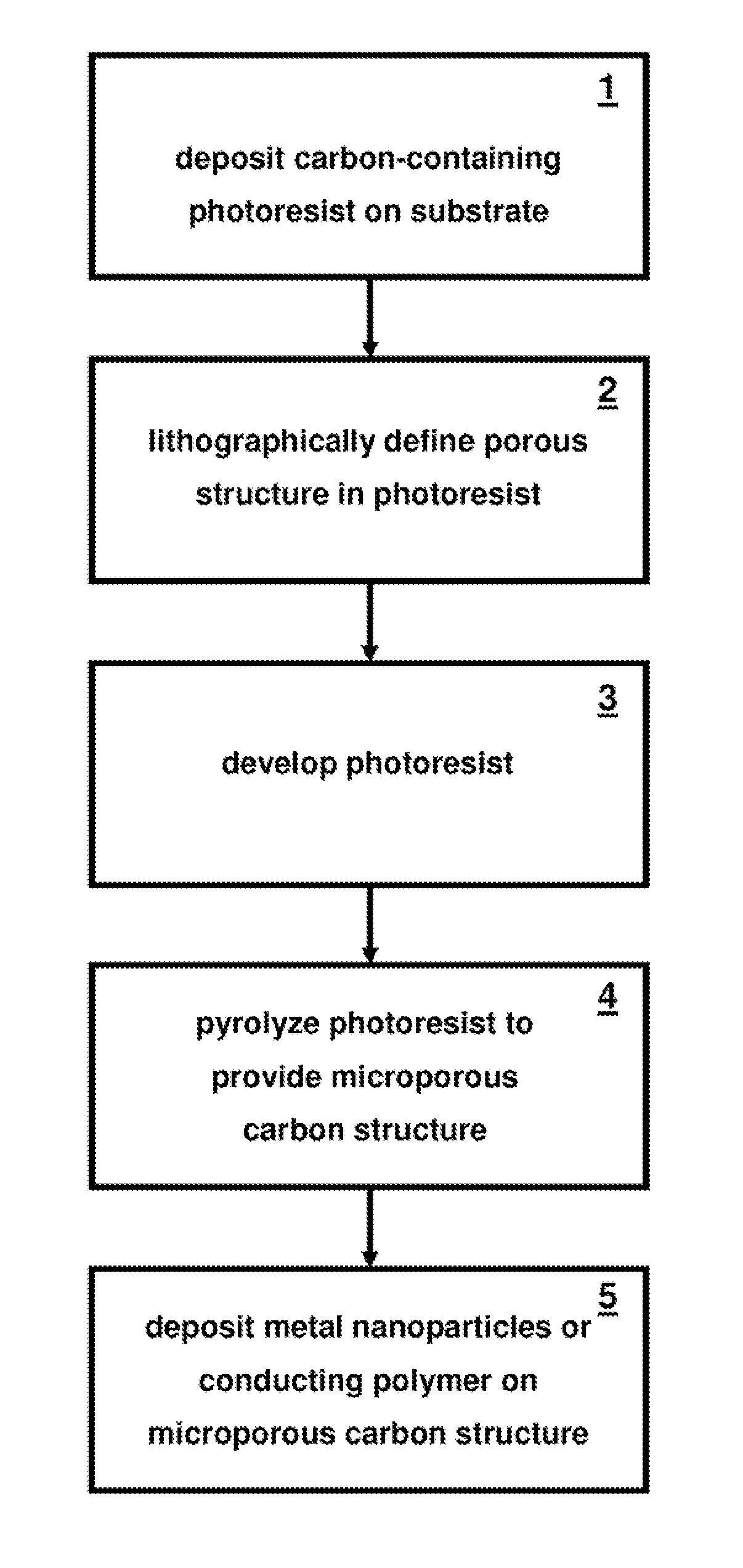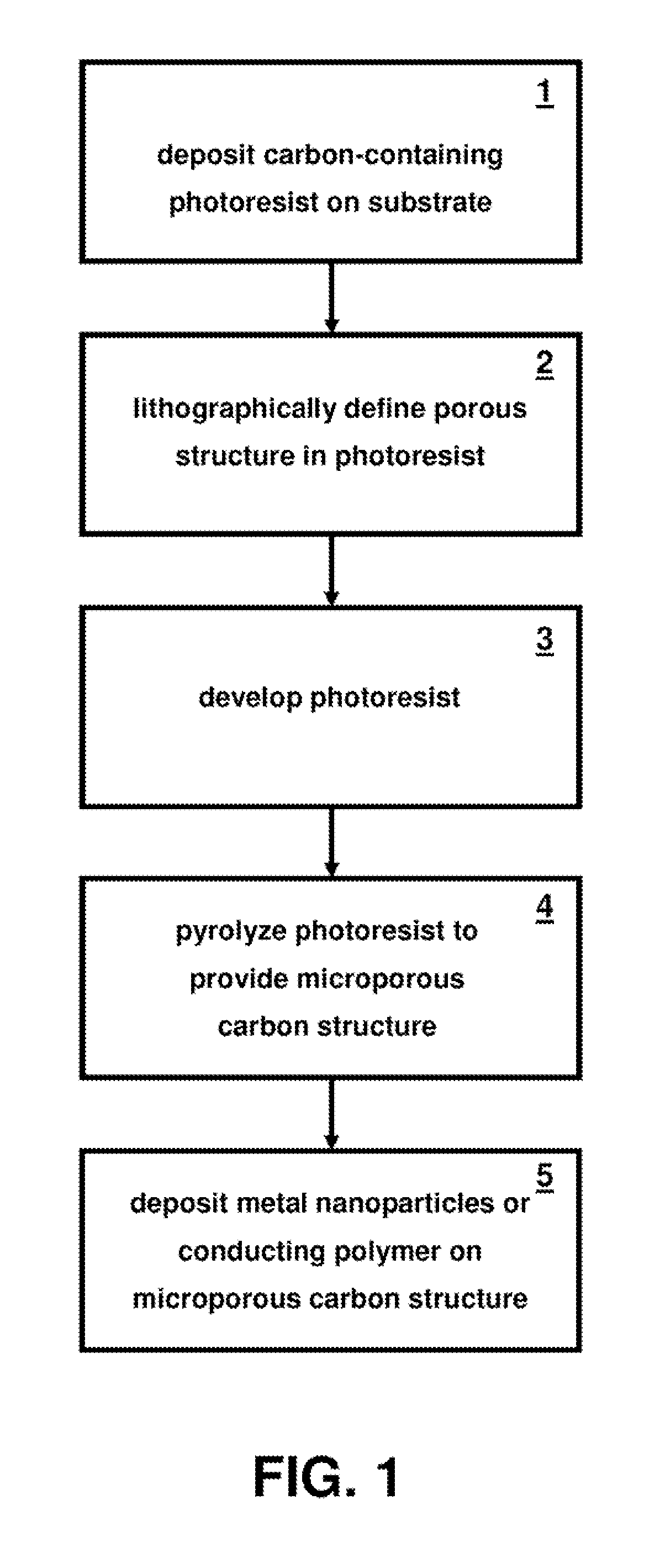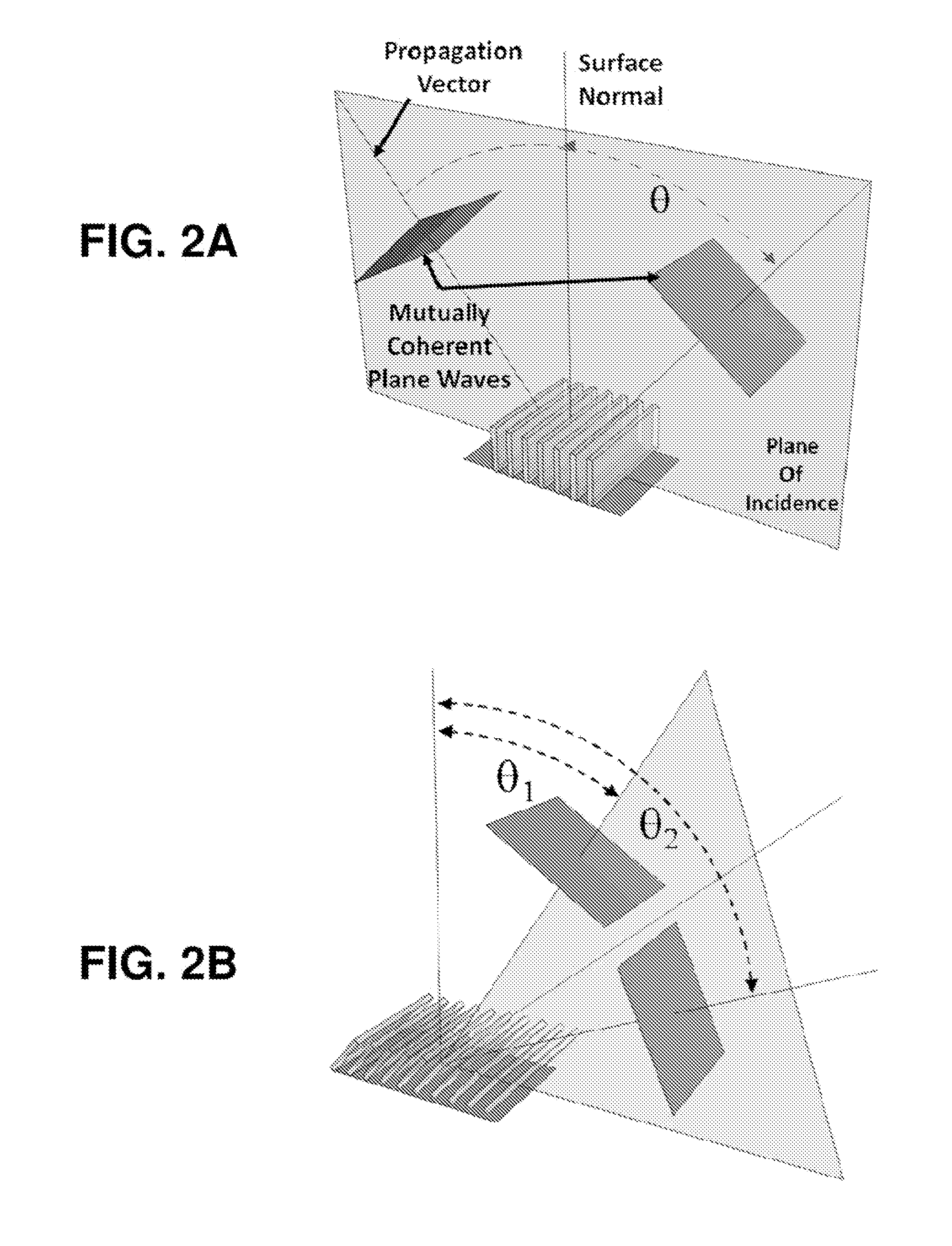Lithographically defined microporous carbon structures
a microporous carbon and structure technology, applied in the field of porous carbon materials, can solve the problems of limiting the advantage of modifying the structure with functional materials such as catalytic particles or large biomolecules, and reducing the mass transport (linear diffusion) profile, and achieves excellent electrochemical behavior, high surface area, and enormous flexibility
- Summary
- Abstract
- Description
- Claims
- Application Information
AI Technical Summary
Benefits of technology
Problems solved by technology
Method used
Image
Examples
Embodiment Construction
[0024]The present invention is directed to lithographically defined porous pyrolyzed photoresist films. Pyrolyzed photoresist films have similar properties as glassy carbon electrodes with an advantage that they can be lithographically defined. Therefore, the invention is further directed to a lithographically defined microporous carbon electrode and to the deposition and electrochemical properties of metal nanoparticles or conducting polymers on these electrodes. The fabrication method is capable of producing large area (e.g., 10's cm2), sub-micrometer porous carbon films. Interferometric lithography can be used to pattern thick photoresist films into 3-D periodic lattices. These structures can then converted to carbon via pyrolysis under flowing forming gas. See S. Ranganathan et al., J. Electrochem. Soc. 147, 277 (2000), which is incorporated herein by reference. During pyrolysis, the non-carbon species in the resist polymer backbone are removed, while the bulk of the carbon rema...
PUM
| Property | Measurement | Unit |
|---|---|---|
| temperature | aaaaa | aaaaa |
| pore size | aaaaa | aaaaa |
| pore size | aaaaa | aaaaa |
Abstract
Description
Claims
Application Information
 Login to View More
Login to View More - R&D
- Intellectual Property
- Life Sciences
- Materials
- Tech Scout
- Unparalleled Data Quality
- Higher Quality Content
- 60% Fewer Hallucinations
Browse by: Latest US Patents, China's latest patents, Technical Efficacy Thesaurus, Application Domain, Technology Topic, Popular Technical Reports.
© 2025 PatSnap. All rights reserved.Legal|Privacy policy|Modern Slavery Act Transparency Statement|Sitemap|About US| Contact US: help@patsnap.com



